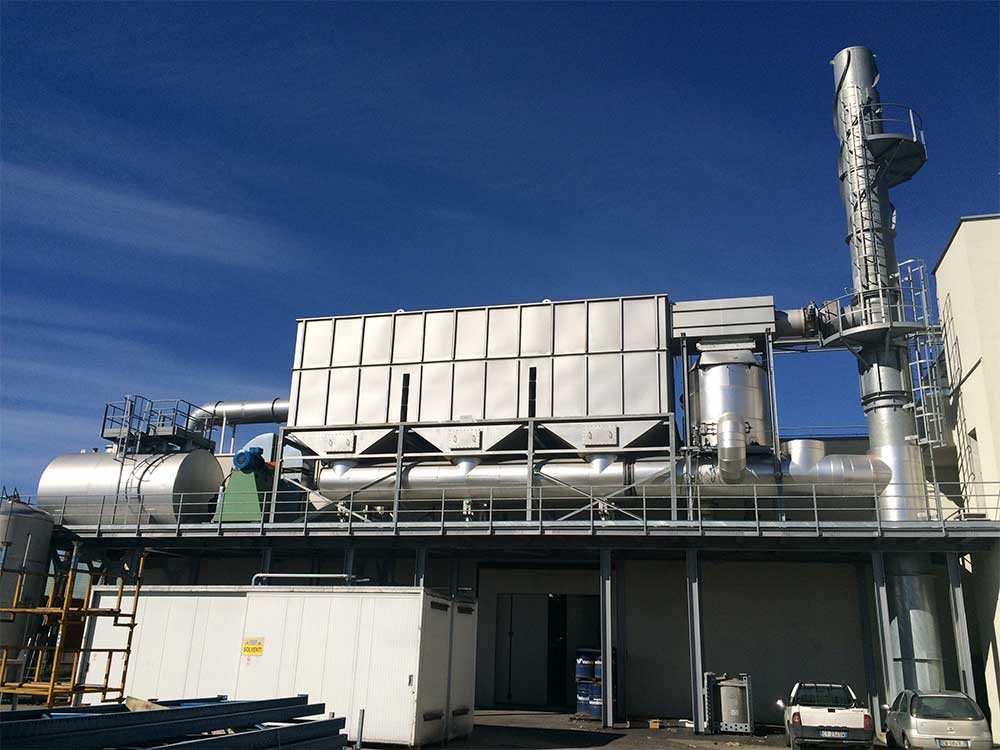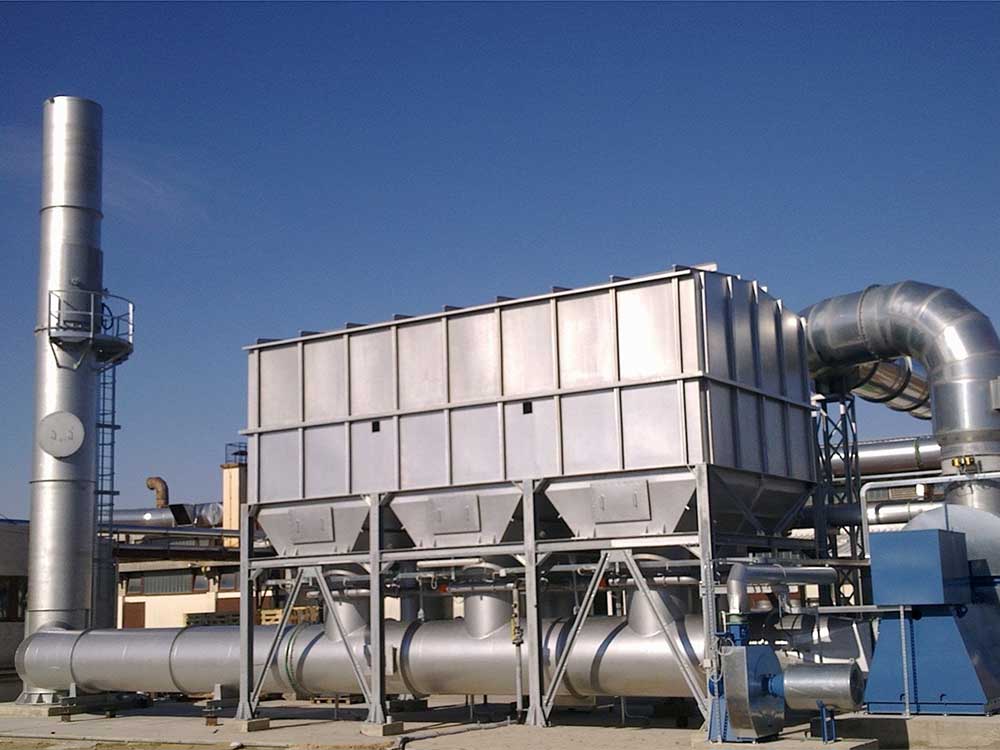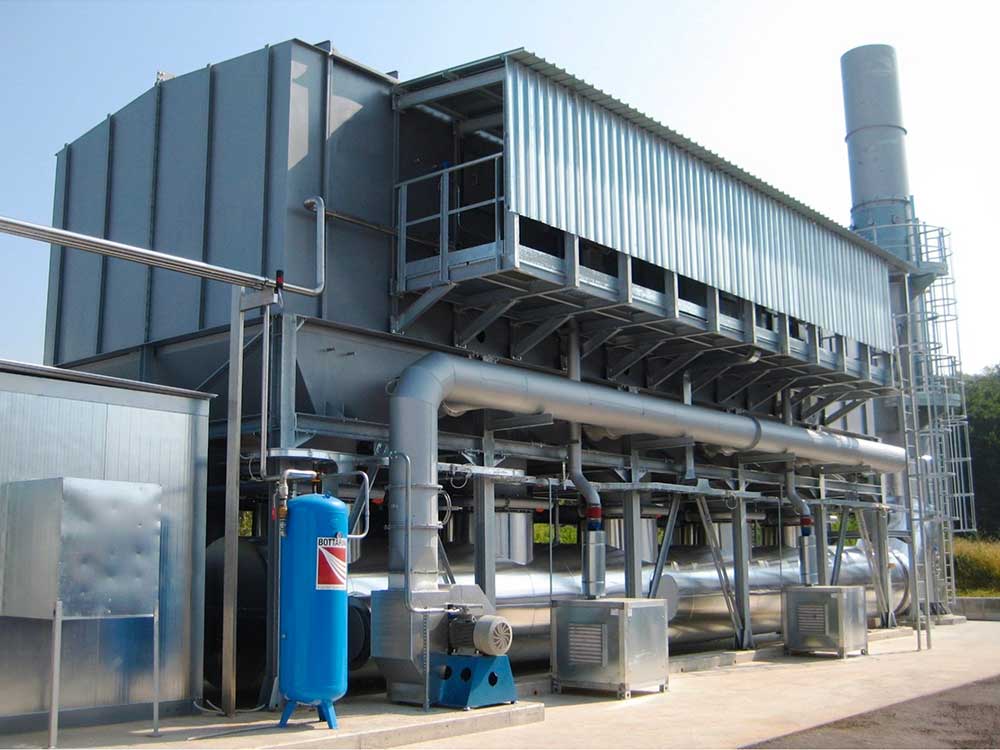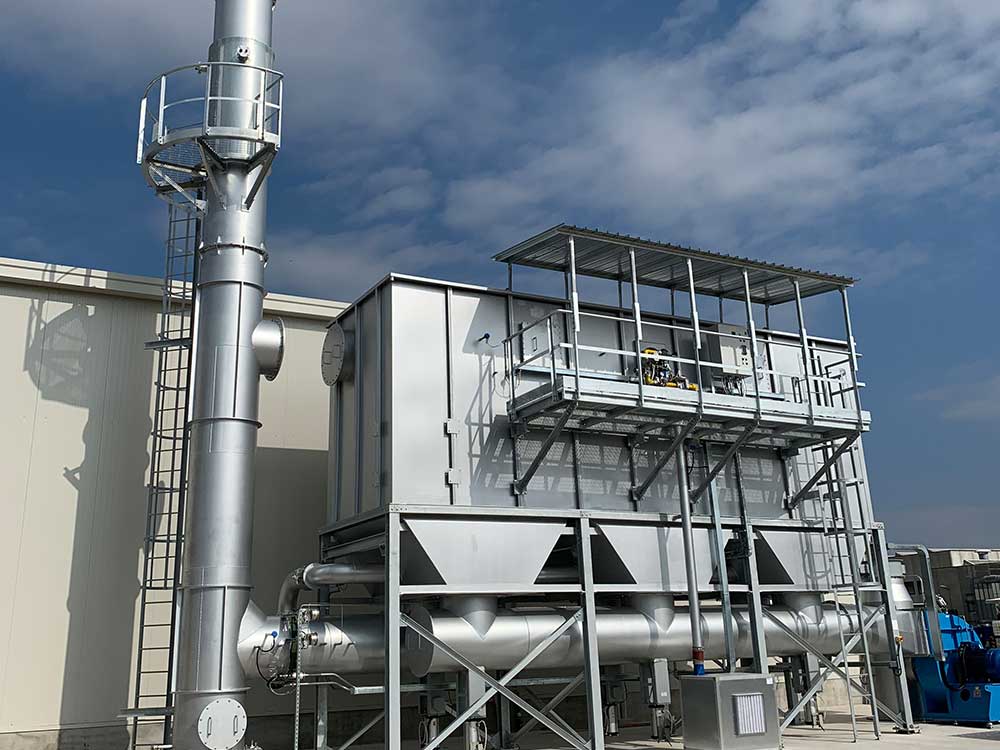Auxiliary equipment
Regenerative thermal oxidizer plant
Design and construction of regenerative thermal oxidizer (RTO) plants for environmental protection.
We provide a wide range of solutions and services to meet customer needs regarding environmental issues and compliance with laws relating to emissions into the atmosphere.
Gallery Fotografica
Descrizione del processo
The regenerative thermal oxidizer allows the oxidation of volatile organic substances (VOC), increasing the temperature of the polluted air above 750÷800°C with a high-efficiency ceramic mass system.
The regenerative thermal oxidizer plant is usually composed of 3 towers.
In the presence of high air flow it can also be made with 5 towers.
Each regenerative tower contains ceramic material which, depending on the direction of the gas flow, absorbs or releases heat to the ceramic mass.
The polluted air coming from the process is sent by the fan through the bed of chamber 1 and released, after the oxidation of the pollutants in the combustion chamber, through the bed of chamber 2.
During this phase, while the ceramic material of chamber 1 cools and that of chamber 2 heats up, chamber 3 is flushed and the residues from the previous cycle are sent to the inlet of the system. Subsequently, the flow reverses.
The average time of a cycle varies from 60 to 120 seconds, depending on the nature and concentration of the pollutants.
The oxidation temperature, normally around 800°C, is maintained by the heat produced by the oxidation of the pollutants or, if the latter are in quantities insufficient to self-sustain, with the addition of the support fuel.
In the event that, thanks to the high concentrations of pollutants, there is the possibility of obtaining residual heat from the treated fumes, the installation of recovery systems is possible.
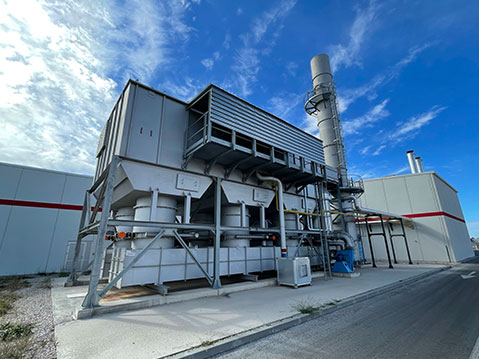
Other available technologies
Other available technologies are recuperative thermal oxidation and catalytic oxidation.
Recuperative thermal oxidation
Recuperative thermal oxidation allows the purification of polluted air through high temperature thermal oxidation, usually between 750 and 850°C.
Heat recovery is carried out using an air-to-air exchanger.
It is particularly suitable in cases where the current contains high concentrations of organic pollutants and in particular in cases where other systems cannot be used.
If there is excess heat, it is possible to install additional heat recovery for the production of steam or thermal oil/hot water heating.
Catalytic oxidation
Catalytic oxidation is a process that allows the oxidation of organic compounds at a reduced temperature compared to traditional oxidation, normally between 250 and 350°C, thanks to a special catalyst.
The polluted stream is therefore preheated using a special exchanger in order to reduce fuel consumption.
It is suitable in cases of medium/high concentration.

